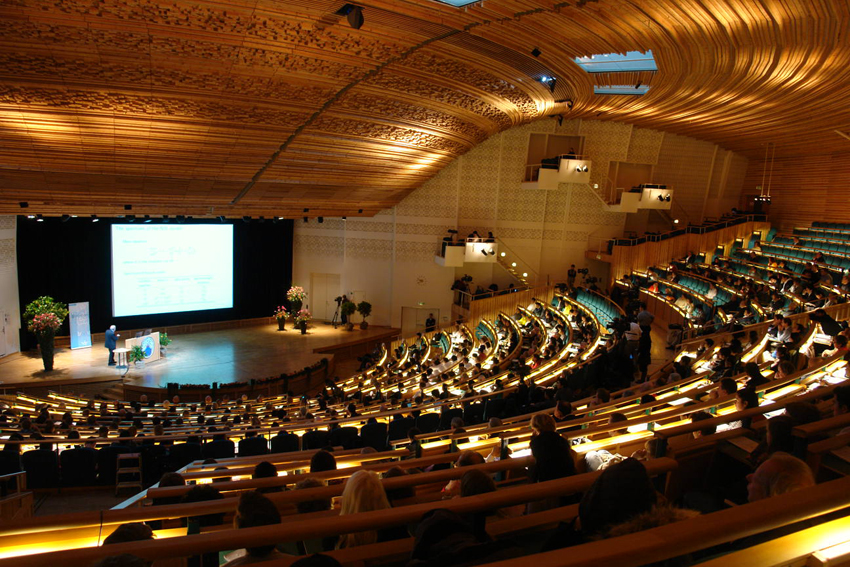Venue
Aula Magna
Address:
Frescativägen 6/Universitetsvägen 10 B-C. Directions: Aula Magna is located about five minutes’ walk from the metro, buses, and Roslagsbanan stops "Universitetet". It can be accessed from the red line by metro, by Roslagsbanan from Östra station and by different buses, more info on the travel planner on SL website. (when on website, search for "Universitetet" as your destination)
History
Aula Magna was designed by architect Ralph Erskine (1914-2005), together with Lars Wilson, and inaugurated in 1997. This came to be the last building that Erskine created for the campus area. In gratitude for his work, Erskine was awarded the University Gold Medal in 1997.
Aula Magna is seven floors tall, three of which are blasted into the rock. Towards the north east, where the main entrance is, it gives a low and small-scale impression, and the generous foyer appears behind the glass façade. The building rises to its full height on the south west side. By dividing the façade into many volumes of different sizes, structures and heights, Erskine managed to shape this closed part in an interesting way. The façade is made of patterned bricks of shifting textures and different shades of red, yellow and brown. Erskine’s typical solar reflectors, which let daylight into the auditorium via skylights, can be seen from far away.
What is here today
Besides the big auditorium, Aula Magna houses a number of group and seminar rooms, a gallery and study spaces.
Fun facts
In the construction of Aula Magna, high requirements were placed on good sound insulation and acoustics. This has resulted in, for example, that a speaker can stand on stage and speak without a microphone to 1,200 listeners. In December each year, the Royal Swedish Academy of Sciences organises the traditional Nobel lectures here with different laureates.

